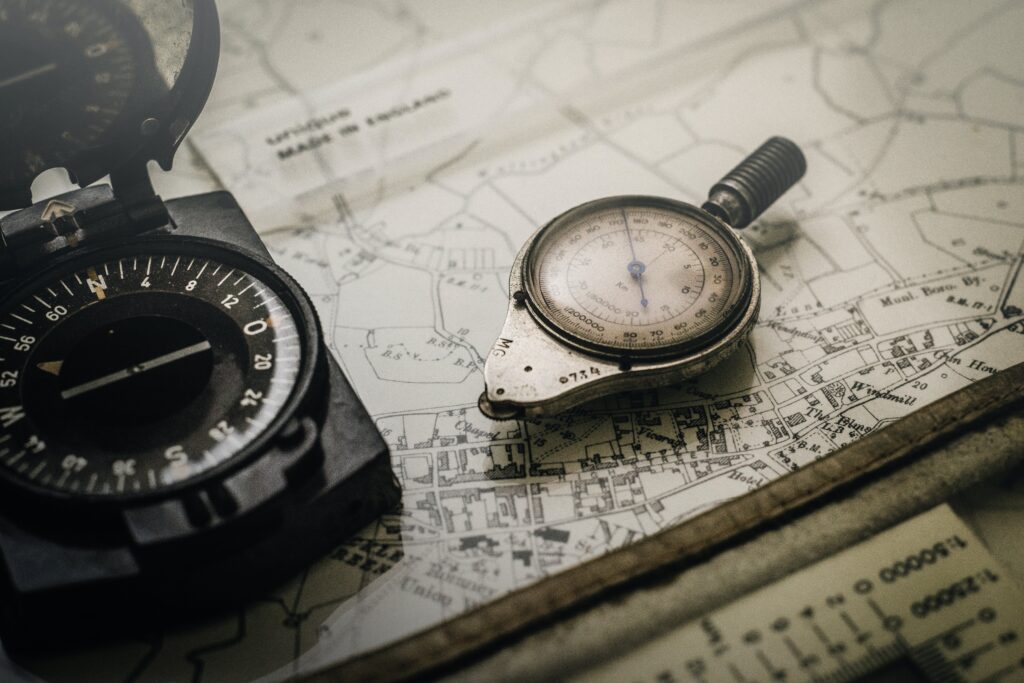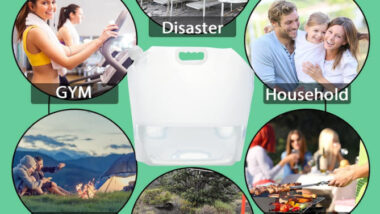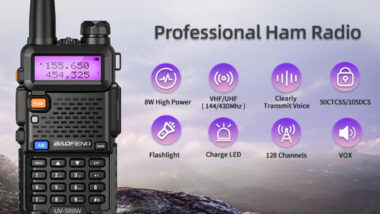Steps to Plan a Safe Bug-Out Route for an Emergency

When an emergency hits it’s essential to have a bug out route. A well-thought-out evacuation plan can be a matter of life and death. In addition it’s a means to stay in touch with your family in the event you get separated.
Whether it’s a natural disaster, a terrorist attack, or any other unforeseen event, being prepared and having a safe bug out route in place is crucial.
Plan for Emergency Scenarios
This article explores the importance of creating effective evacuation plans for different scenarios. And it will provide you with practical tips and strategies to ensure your safety and the safety of your loved ones.
From mapping out escape routes to considering alternative transportation options, we will guide you through the process of establishing a comprehensive plan that will give you peace of mind in the face of unexpected adversity.
Identifying Potential Scenarios
Natural Disasters
When it comes to planning for emergencies, natural disasters should be at the forefront of your mind. Whether it’s a hurricane, earthquakes, tornadoes, or flood, it’s important to understand the specific risks associated with your location. Assess the history of natural disasters in your area and identify the potential impacts they could have on your community.
Fire Emergencies
Fires can be devastating and spread rapidly, posing a significant threat to lives and property. Developing a comprehensive evacuation plan for fire emergencies is crucial. Determine the most vulnerable areas within your facility or community, such as high-risk areas where fires may start or areas with limited escape routes. Understanding fire prevention measures and establishing effective evacuation strategies will ensure everyone’s safety.
Chemical Spills or Releases
Chemical spills or releases can have severe consequences, leading to injuries or exposure to hazardous substances. Recognize the potential hazards associated with chemicals commonly used or stored within your facility or community. Establish safe zones where individuals can seek refuge during such emergencies. Coordinate with hazardous materials teams to ensure a prompt and proper response to any chemical incidents.
Terrorist Attacks (Any Threat or Attack)
While we hope this never occurs, it is essential to prepare for terrorist attacks. Consider the potential targets within your community and the types of attacks that could occur. Stay informed about potential threats and develop protocols for communication, evacuation, and cooperation with local law enforcement agencies. By identifying potential risks, you can take proactive steps to mitigate them.
Medical Emergencies
It is good to plan for a medical emergency, however in a major crisis you must be self reliant as there is a chance no one is coming to help you. Beside a plan to escape and meet up with family and community it is essential to have a go bag, supplies and a medical kit on hand.
Medical emergencies can happen anywhere, at any time. So having a plan in place is crucial to handling it quickly and effectively. Identify key individuals who can provide medical assistance during emergencies and establish a means to communicate with nearby medical facilities. Allocate necessary medical supplies and equipment while considering the unique needs of individuals within your community, such as allergies or chronic medical conditions.
Assess Risks and Hazards Understanding the Location and Surroundings
To effectively plan for emergencies, you need a thorough understanding of your location and its surroundings. Consider the geographical factors that could impact the severity of a disaster, such as proximity to waterways or fault lines. Familiarize yourself with local emergency services and their capabilities, ensuring that your plans align with their resources.
Evaluating Vulnerable Areas
Identifying vulnerable areas within your facility or community is essential for targeted emergency planning. Assess areas that may be more prone to damage or pose greater risks during specific scenarios. These could include sections of buildings with outdated infrastructure, proximity to hazardous materials, or locations with limited accessibility.
Identifying Potential Obstacles
Recognize the potential obstacles or challenges that may arise during an evacuation. For instance, narrow hallways, stairwells, or outdated emergency exit signs can hinder the evacuation process. By identifying these obstacles, you can develop strategies to overcome them and ensure a smooth evacuation for everyone involved.
Analyzing Population Density
Understanding the population density in your facility or community is crucial for emergency planning. Consider the number of individuals who may need assistance during an evacuation. Account for high-density areas, such as hospitals, schools, or apartment buildings, where a large number of people may require help. Tailor your evacuation plans to accommodate these specific needs.
Establishing Communication Channels
Choosing the Right Communication Tools
Effective communication is the backbone of any successful evacuation plan. Evaluate different communication tools and determine which ones are most suitable for your facility or community. Options can include public address systems, emergency radios, or mobile phone apps. Choose tools that provide reliable coverage, even during emergencies, to ensure clear and timely communication.
Developing Emergency Communication Protocols
Establishing clear protocols for emergency communication is vital for ensuring that important information reaches all individuals involved. Determine how emergency alerts and updates will be communicated, including evacuation orders, rally points, or changes in the situation. Develop a predefined hierarchy of communication, designating a point person or a team responsible for disseminating information.
Designation of Communication Points
Identifying specific communication points within your facility or community is crucial for maintaining effective communication during emergencies. Designate areas where individuals can gather to receive updates, obtain instructions, and report their status. These communication points should be easily accessible and well-marked, ensuring that everyone knows where to go in case of an emergency.
Defining Evacuation Procedures
Forming Emergency Response Teams
Establishing well-trained emergency response teams can greatly improve the effectiveness and efficiency of your evacuation plan. Assign individuals with specific roles and responsibilities, such as first aid providers, evacuation coordinators, and communication officers. Ensure these teams undergo regular training and participate in drills to enhance their preparedness.
Assigning Key Roles and Responsibilities
Clearly define the roles and responsibilities of key individuals during an evacuation. This includes identifying who will sound the alarm, who will assist individuals with special needs, who will coordinate with emergency services, and who will account for everyone’s safety. By assigning these roles, you can streamline the evacuation process and maintain order during a chaotic situation.
Setting Up Evacuation Routes
Designing clear and easily navigable evacuation routes is essential for a successful evacuation. Identify multiple routes for people to exit your facility or community, taking into account factors such as accessibility, the number of individuals, and potential hazards. Ensure these routes are well-marked with clear signage to guide individuals to safety.
Determining Assembly Points and Safe Zones
Establishing designated assembly points and safe zones where individuals can gather after evacuating is crucial for accounting for everyone’s safety. These areas should be located away from the potential dangers of the emergency and provide adequate protection. Clearly communicate the location of these assembly points and ensure that they have the necessary facilities and resources for those seeking refuge.
Account for Special Needs
Identifying Individuals with Special Needs
It is essential to recognize and identify individuals with special needs within your facility or community. These could include individuals with disabilities, elderly individuals, pregnant women, or individuals with medical conditions. Develop a system to identify these individuals before an emergency occurs, ensuring that they receive the necessary assistance during an evacuation.
Planning for People with Disabilities
Take into account the specific needs of individuals with disabilities during an evacuation. Consider accessible exit routes, evacuation chairs, personal support plans, and communication strategies for those with hearing or visual impairments. Collaborate with individuals with disabilities to ensure that their needs are met and that they can safely evacuate in an emergency.
Ensure Medical Assistance
Medical emergencies can occur during any evacuation. Ensure that individuals with medical conditions have access to necessary medication and equipment during the evacuation process. Train designated individuals in basic first aid and establish communication channels with nearby medical facilities to provide prompt and appropriate assistance when needed.
Addressing Language and Cultural Differences
In a diverse community, addressing language and cultural differences is crucial during an emergency. Ensure that evacuation instructions, signage, and communication materials are available in multiple languages. Provide interpreters or resources to assist those who may have difficulty understanding or communicating in the dominant language. Respecting cultural practices and customs during emergencies is essential for fostering trust and inclusivity.
Educating and Training
Conducting Awareness Campaigns
Creating awareness and educating the individuals within your facility or community is vital for effective emergency planning. Conduct regular awareness campaigns to inform everyone about the potential risks, evacuation procedures, and the importance of preparedness. Use various forms of media, such as newsletters, posters, or informational sessions, to disseminate critical information.
Training Employees or Residents
Train employees or residents on their roles and responsibilities during an evacuation. Provide them with the necessary knowledge and skills to respond appropriately during emergencies. Ensure that training covers topics such as evacuation procedures, first aid, handling specific scenarios, and using emergency equipment. Regularly refresh this training to keep everyone prepared and up to date.
Organizing Mock Evacuation Drills
Mock evacuation drills are an excellent way to test the efficiency and effectiveness of your evacuation plan. Organize drills regularly to familiarize individuals with the evacuation procedures, identify areas for improvement, and build confidence in their ability to respond during an emergency. Mock drills also serve as valuable training opportunities for emergency response teams.
Regularly Updating Training Materials
Emergency preparedness is an evolving process, and staying up to date with the latest information is crucial. Regularly review and update training materials to reflect any changes in procedures or new insights. Share updated materials with employees or residents to ensure that everyone has the most accurate and relevant information regarding evacuation procedures.

Evacuation Plan for Natural Disasters
Hurricanes and Storms
Develop an evacuation plan for hurricanes and storms by identifying evacuation routes away from coastal areas or areas prone to flooding. Determine inland safe zones or shelters designated for those seeking refuge. Stay informed about weather alerts and communicate evacuation orders promptly to ensure everyone’s safety.
Make a Plan in an Earthquake
Earthquakes can occur without warning, making preparedness essential. Identify safe areas within your facility or community, such as under sturdy furniture or away from objects that may fall. Educate individuals on the “Drop, Cover, and Hold On” technique. Conduct regular drills to practice the appropriate response during an earthquake.
Have a Plan in the Event of a Tornado
When planning for tornadoes, determine the safest areas for shelter within your facility or community, such as basements or interior rooms without windows. Develop communication protocols to quickly alert individuals to seek shelter. Ensure that everyone understands tornado warning signs and knows how to take immediate action.
Identify Potential Flood Areas
Floods can be both slow-onset or rapid-onset emergencies, requiring different evacuation strategies. Identify flood-prone areas within your community and establish evacuation routes to higher ground. Educate individuals on flood warnings, how to monitor water levels, and the importance of heeding evacuation orders. Provide guidelines on safe behavior during floods, such as avoiding floodwaters and electrical hazards.
Evacuation Plan for Fire Emergencies
Fire Prevention Measures
Fire prevention measures can significantly reduce the risk and severity of fire emergencies. Install and regularly test smoke detectors, fire alarms, and sprinkler systems within your facility or community. Develop protocols for inspecting and maintaining electrical systems and equipment. Promote fire safety education, such as proper storage of flammable materials and safe cooking practices.
Fire Evacuation Strategies
When it comes to fire emergencies, quick evacuation is of utmost importance. Clearly communicate the evacuation procedures, ensuring that individuals know the nearest exits and evacuation routes. Encourage individuals to evacuate immediately when the fire alarm sounds or smoke is detected. Emphasize the importance of leaving personal belongings behind to prioritize their safety.
Using Fire Extinguishers
Having trained individuals who can effectively use fire extinguishers is crucial during fire emergencies. Conduct training sessions on how to operate fire extinguishers safely and appropriately. Educate individuals on when to use fire extinguishers and when it is safer to evacuate. Regularly inspect and maintain fire extinguishers to ensure their effectiveness when needed.
Coordinate with Local Fire Department
Collaboration with the local fire department is essential for a coordinated response to fire emergencies. Inform the fire department about any unique hazards or challenges within your facility or community. Establish communication channels to request assistance promptly during a fire emergency. Regularly communicate and update your evacuation plan based on the fire department’s recommendations.
Evacuation Plan for Chemical Spills or Releases
Identify Hazardous Chemicals
It is critical to identify hazardous chemicals stored or used within your facility or community. Create an inventory of these chemicals, including their specific hazards and safety protocols. Educate individuals on the potential risks associated with each chemical and how to respond to a spill or release. Ensure that proper safety measures are in place for the handling and storage of these chemicals.
Establish Safe Zones as part of a Bug Out Route
Establish safe zones within your facility or community where individuals can seek refuge in the event of a chemical spill or release. These areas should be upwind and away from the source of the chemical hazard. Ensure that these safe zones have appropriate ventilation, protective equipment, and decontamination facilities to minimize exposure risks.
Provide Protective Equipment
Make sure that individuals have access to the necessary protective equipment to mitigate the hazards of a chemical spill or release. This may include personal protective clothing, respiratory protection, or eye and face protection. Train individuals on the proper use of this equipment and conduct regular inspections to ensure its availability and functionality.
Coordinating with Hazardous Materials Team
Coordinate with local hazardous materials teams to develop a coordinated response to chemical spills or releases. Establish communication channels to notify them promptly and accurately about the incident. Collaborate with these teams to develop strategies for containment, cleanup, and the safe disposal of hazardous materials.
Evacuation Plan for Medical Emergencies
Dealing with Medical Emergencies within a Facility
Prompt and effective actions during medical emergencies can be lifesaving. Establish clear protocols for individuals to follow when a medical emergency occurs within your facility. Train designated individuals as first aid providers and equip them with necessary medical supplies. Ensure communication channels are in place for contacting emergency medical services quickly.
Coordinate with Nearby Medical Facilities
Collaborating with nearby medical facilities is crucial for a comprehensive medical emergency response plan. Establish communication protocols between your facility or community and these medical facilities. Share relevant medical information to ensure a smooth transition of care during an emergency. Coordinate with them to develop procedures for the transfer of individuals requiring more advanced medical assistance.
Allocating Medical Supplies and Equipment
During a medical emergency, having readily available medical supplies and equipment is crucial. Conduct regular inventories of medical supplies, ensuring that they are adequately stocked and not expired. Establish designated areas for medical equipment, such as defibrillators or stretchers, and ensure they are easily accessible. Train individuals on the proper usage of medical equipment, if necessary.
Develop a Plan With Medical with Local Emergency Response Teams
Form specialized medical emergency response teams equipped with the necessary medical knowledge and skills. Assign individuals to specific roles, such as primary care providers, triage officers, or medical record keepers. Regularly conduct training and drills to ensure these teams can respond swiftly and effectively during a medical emergency.
In summary, creating effective evacuation plans for different scenarios requires a thorough assessment of potential risks and hazards, robust communication channels, well-defined evacuation procedures, tailored accommodations for individuals with special needs, continuous education, and specifically tailored plans for different emergency types. By following these guidelines, you can enhance the safety and preparedness of your facility or community in the face of emergencies.




